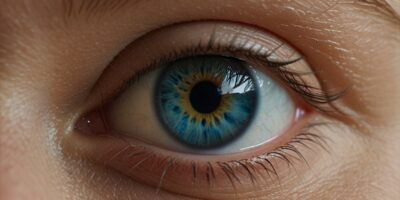Nowadays, sunscreen has been advised by many dermatologists and health-care providers for the sake of skin protection from UV rays ranging from 100 to 400 nm. High exposure to UV rays has acute, chronic, and delayed effects on the skin, i.e., sunburn, photoaging, pigmentation and as a chronic effect, photocancer or skin cancer.
The quality of sunscreen is presumed by SPF (Sun Protection Factor), which basically determines the blockage of UVB rays (290–320 nm), but we also need protection from UVA radiation (340–400 nm range). Thus, a broad-spectrum sunscreen (organic and inorganic filters) is required.
Organic sunscreens are made up of compounds that absorb a specific portion of the UV and re-emit it as heat or light, e.g., avobenzone, octocrylene, and many more. And inorganic (aka natural), which are little absorbed by skin, stay on the surface, such as zinc oxide (ZnO), titanium dioxide (TiO2), and ferrous oxide (FeO2).
Sunscreens are challenged by the following:
- Penetrates into the skin and unknown chemicals are exposed to the cells.
- Causes hormonal imbalance.
- Decreases vitamin-D production.
- Develops skin itchiness, allergies and also increases the chances of cancer.
Final Conclusion:
It is true that several studies on animals show that both organic and inorganic sunscreens absorb into the body and cause different reactions, such as DNA damage and mutations that may lead to cancer. Hormonal disturbances and allergies are also seen in some people.
- As UV ray exposure varies with the latitude, longitude, and altitude of the place, its effects are also different on humans. However, there are very few human studies that have proven the toxic claims of sunscreen.
- Vitamin-D production and sunscreen use are not linked.
- Some filters have been proven to protect against skin cancer in the studies, except for new-generation sunscreens (complete studies are yet to be done).
- Each human is different with respect to age, nutrition, immunity, and sun exposure, so effects should be different. The World Health Organization (WHO) recommends that sunscreen should be applied 20 minutes before sun exposure, with reapplication every second hour, and repeated after swimming or bathing, using a thickness of 2 mg/cm2 on the exposed skin.
- The very high SPF (70–100) doesn’t mean you need less or that reapplication is not required.
- Other studies showed applying sunscreen is just one step in controlling sun exposure, it also includes, seeking shade in the middle of the day and wearing clothing and wide-brimmed hats.
Always try to protect your skin by either applying an external sunscreen or improving your immunity. Investment in sunscreen depends on you, whether to spend or not.
Referenced by-
- Burnett, M. E., & Wang, S. Q. (2011). Current sunscreen controversies: a critical review. Photodermatology, Photoimmunology & Photomedicine, 27(2), 58–67. doi:10.1111/j.1600-0781.2011.00557.x
- Gasparro, F. P., Mitchnick, M., & Nash, J. F. (1998). A Review of Sunscreen Safety and Efficacy. Photochemistry and Photobiology, 68(3), 243–256. doi:10.1111/j.1751-1097.1998.tb09677.x
- Lodén et. al., (2011). Sunscreen use: controversies, challenges and regulatory aspects. British Journal of Dermatology, 165(2), 255–262. doi:10.1111/j.1365-2133.2011.10298.x
- Petersen, B., & Wulf, H. C. (2014). Application of sunscreen − theory and reality. Photodermatology, Photoimmunology & Photomedicine, 30(2-3), 96–101. doi:10.1111/phpp.12099




Leave a Reply